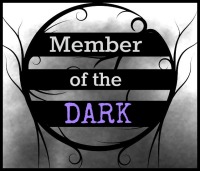
Yahoo Image Search
Even if you don’t write horror, you may want to include some fear in your stories. From fear, we can create hope and relief. We can also drive people into despair and sadness. It’s a fascinating jumping point for so many stories. Yet, one does come off a little depraved if they enjoy the manipulation too much. Still, we’ve come this far (5.5 sentences) and might as well move on to the advice.
- Fear doesn’t always come from gore. That’s actually disgust. The fear can come at the beginning because you are surprised by the gore, but it isn’t the main focus. This may seem like it’s more for movies and shows. It isn’t because authors add graphic descriptions of violence in their books at times. Blood being described as it flies from a body and limbs getting hurled into the air like hats at a high school graduation. Just know that the fear kind of comes and goes in this scenario, so you can’t depend on gore for that emotion.
- You can cause a reader to become numb to fear. If stimulated and kept tense for a long period of time, a person may simply turn off that part of their mind. It isn’t intentional, but the human body does what it can to reduce stress. This means, keeping the tension going for too long can result in there being no payoff. This is the reason why many authors suggest that you create tension in waves. Add calm and relaxing scenes between the tense ones in order to keep the reader emotionally invested.
- Never flat out tell a reader that he or she has to be scared. They don’t like that.
- Have a reason for the fear being in your story. If you’re writing a romance then repeatedly terrifying your reader won’t help with the plot. You can have some tense scenes where a touch of fear is involved, but you have to maintain the proper tone for fear to make sense. It is one of the most powerful emotions that humans have and it has a major impact on tone in a story. Throwing it in for amusement when it doesn’t match can ruin everything.
- Dialogue can be just as important as exposition when it comes to inducing fear. Think about being told a story in a way that puts you on the edge of your seat. A character is capable of doing this. It can be tricky because you may have to depend on adjectives or risk an info dump. You can’t have them do this with a few quick sentences, but you can’t go on for pages upon pages. That’s just a story within a story, which can throw readers off. Beta readers can really come in handy here.
- If you can scare yourself then you’re onto something. Then again, being the author means you’re emotionally invested in the first place. Don’t take your own sense of fear as proof that you’re doing things perfectly It’s more that you’re in the right ballpark that you plan on dropping the readers off in. Unlike them, you know where the story is going, so the fear has an added level of anticipation that can enhance it. You may miss that you aren’t creating enough tension for a person lacking in your pre-existing knowledge. As before, beta readers can help here.
- Just because Stephen King did it doesn’t mean you should or can do it too. Fear depends a lot on there being something that a person hasn’t seen. If you go for an evil clown then you may only scare those with the specific phobia. Others will roll their eyes and all tension will disappear.





Really helpful tips! Fear is so unpleasant. I wonder if that’s why some authors shy away from it? But a reader can’t help noticing its absence when, given the situation, it should be there. I have read books and watched movies where the characters didn’t show fear. Granted, fear can be challenging to depict, especially if an author wants to avoid the usual knees-knocking approach. But there are so many things that people are afraid of.
LikeLiked by 1 person
Some authors could avoid it due to the unpleasantness. Either they don’t want to feel it or instill it in others. To be fair, it’s hard to pull off. Once you start saying that a character is afraid, it’s broken. You need to demonstrate it through words and body language, which is a major challenge.
LikeLike
Reblogged this on Chris The Story Reading Ape's Blog.
LikeLike
Thanks for sharing.
LikeLiked by 1 person
Very interesting and very helpful. Thank you! Honestly i never had such deep thoughts about this. Michael
LikeLike
Glad it was helpful. Thanks.
LikeLiked by 1 person
Thank you very much, Charles! Always very appreciated. Have a nice rest of the week, and please stay save! Michael
LikeLiked by 1 person
Stay safe and enjoy the rest of your week too.
LikeLike
I love this post, and #3 is so important.
LikeLike
Thanks. That’s probably the biggest one.
LikeLiked by 1 person
Great post, Charles. I remember reading some books where I was hesitant to turn off the lights. Your tips are great. I’m sharing over on my blog.
LikeLike
Glad you enjoyed them. Betting those authors would love hearing they got such a reaction.
LikeLiked by 1 person
Well, one was Stephen King. I’m sure he’s heard that many times.
LikeLiked by 1 person
Probably. The screams of his fans fuel his soul.
LikeLiked by 1 person
Reblogged this on Author Don Massenzio and commented:
Check out this great post from the Legends of Windemere blog with 7 Tips to Adding Fear Into Fiction
LikeLike
Thanks for sharing.
LikeLiked by 1 person
You’re welcome.
LikeLike
Pingback: 7 Tips to Adding Fear Into Fiction | Dragons Rule OK. V.M.Sang (author)
Thanks for such a helpful post, Charles. Reblogged on Dragons Rule OK and commented, ‘Here are some helpful tips from Charles Yallowitz on adding fear to you writing.’
LikeLike
Glad you found it helpful. Thanks for the reblog.
LikeLike
Pingback: 7 Tips to Adding Fear Into Fiction — Legends of Windemere – s a gibson
I think your #2 is especially good. Readers can get overloaded or just start to find your tactics repetitive.
LikeLike
Yup. Horror seems to run into this a lot. Scare tactics work and then some creators run the idea into the ground.
LikeLiked by 1 person
Beautifully written, Charles! I have a soft spot for the horror genre and you hit all the niches that many writers I find overlook. I find it especially tactile to mention that the human body numbs out fear. As a disabled veteran, I agree. It’s how us PTSD vets cope, unfortunately and fortunately!
LikeLike
Thanks. I think knowing about going numb to fear is a good lesson for anything. Well, not only fear, but stress is general. Human body and mind can only take so much before damage is done.
LikeLiked by 1 person
Completely agree. And for a writer… it’s that important double edged sword that helps us go beyond. To think about how things are and to experience them are vastly different.
LikeLike
Pingback: 7 Tips to Adding Fear Into Fiction – Author Steve Boseley – Half a Loaf of Fiction
“If you can scare yourself then you’re onto something.” I love that line. 🙂
LikeLike
Thanks. 😊
LikeLiked by 1 person
Pingback: #4 Post of 2021: 7 Tips to Adding Fear Into Fiction | Legends of Windemere